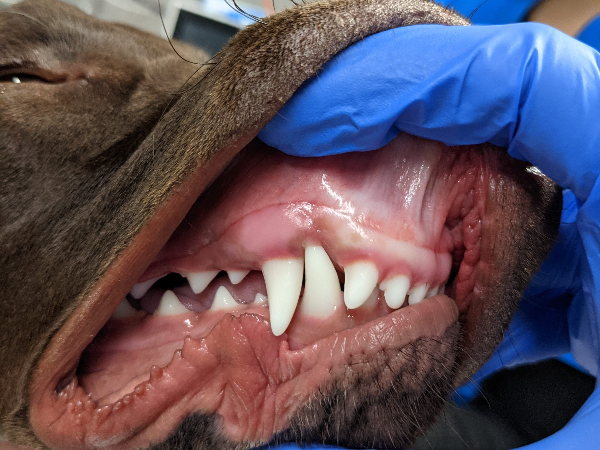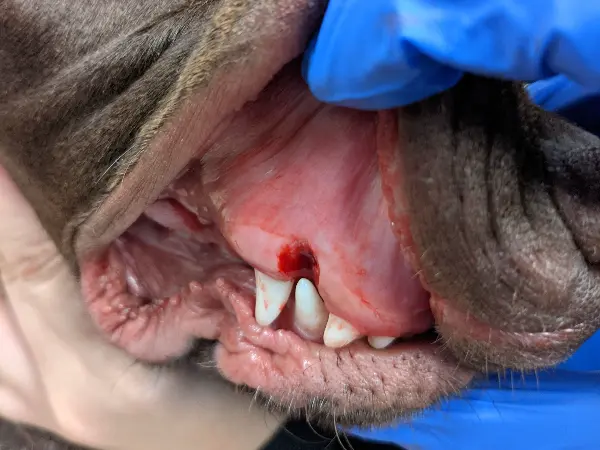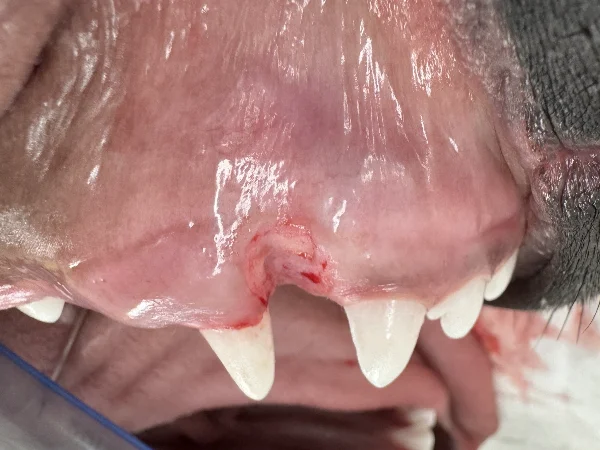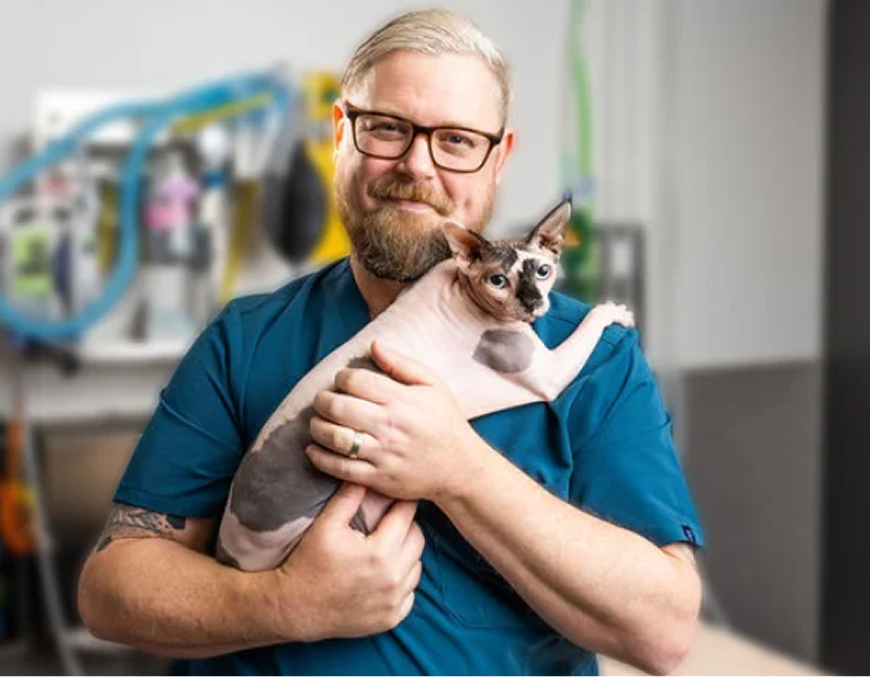Removing complex teeth safely and with minimal impact.
Gingivoplasty, or the ‘gingival wedge’ procedure, is an effective treatment option for patients with linguoverted mandibular canine teeth, commonly referred to as base narrow canines. This condition, if left untreated, can lead to traumatic occlusion, where the teeth bite into the soft tissues of the mouth, causing pain and potential long-term complications. By carefully reshaping the gum tissue, this procedure can guide the eruption of the canine teeth into a more favourable position, helping to prevent further issues and often eliminating the need for more invasive interventions later on.

Gingivoplasty for Class 1 Malocclusion
Gingivoplasty is a surgical procedure often performed in dogs with Class 1 Malocclusion, where the problem lies with the positioning of the teeth rather than the length of the jaw. This procedure is particularly useful for guiding lower canines into a more labial or outward position, which is generally easier than attempting to move the teeth forward or backward.
While primarily used for Class 1 cases, gingivoplasty can also benefit dogs with mild Class 2 (underbite) or Class 3 (overbite) Malocclusion, offering a less invasive solution to correct misaligned teeth and improve overall oral health.
“Proper timing is crucial for optimal results.”

Timing is critical for an effective procedure
This procedure is most effective when performed during the active eruption of the mandibular canine teeth. At this stage, the teeth are still mobile, making it easier to guide them into the correct position.
If gingivoplasty is completed after the teeth have fully erupted, they become firmly anchored in the jaw, significantly reducing the chances of successful repositioning.
On the other hand, performing the procedure too early can lead to improper healing, as the surgical site may revert to its original shape before the canine tips make contact. Proper timing is crucial for optimal results.
“The goal is to create a ramp that guides the erupting mandibular canine teeth into a better position.”

Gingivoplasty in Canine Orthodontics
Gingivoplasty involves the removal and reshaping of gum tissue between the maxillary canine tooth and the maxillary third incisor. The goal is to create a ramp that guides the erupting mandibular canine teeth into a better position.
This procedure is often paired with Ball therapy and is an interceptive orthodontic technique. When successful, it can prevent the need for more invasive treatments. However, if your pet isn’t a candidate or the procedure doesn’t achieve the desired results, there are alternative options available to manage these malocclusions effectively.














